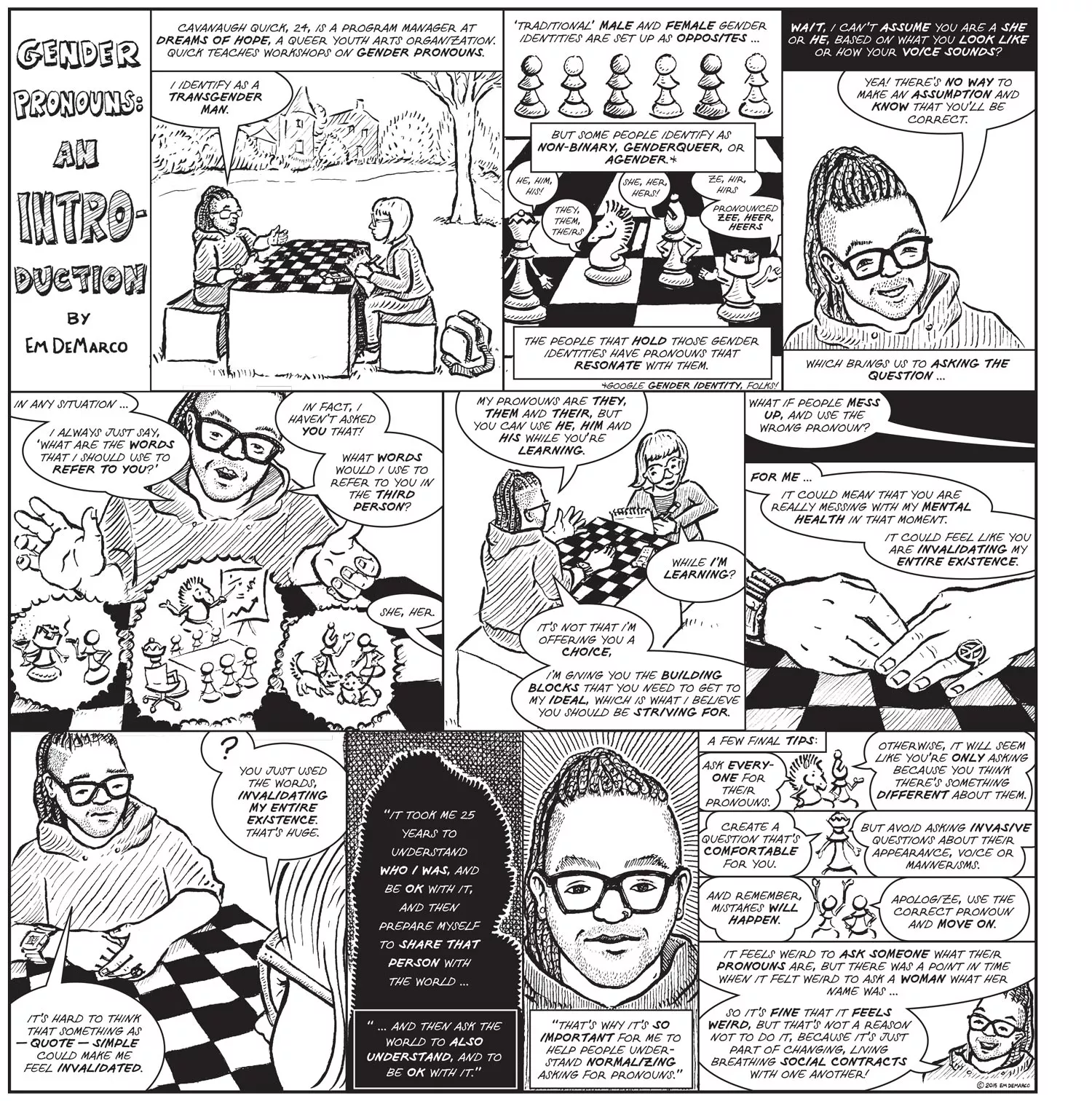

'It' or 'he-she' are offensive terms used against the transgender and gender non-conforming communities.

Never refer to a person as 'it' (unless they specifically ask you to).If you realize the mistake later, you can try apologizing to the person and let them know that you will be more diligent next time. "I'm sorry, I meant to say the book belongs to them not him." In most cases if the mistake is made in the moment and you realize it, try correcting yourself by saying, Introducing yourself with your pronouns is an effective way to be an active ally to trans, genderqueer, and gender non-conforming folks. Introducing yourself with your pronouns can often make it safer and more comfortable for others who might not necessarily use 'traditional' pronouns to come out in that space. 'I'm not transgender, so why introduce myself with my pronouns?' If you don't know the person, or are unsure, it is usually best to use gender neutral pronouns until you know. What pronouns would you like me to use to refer to you?.I'm from Ohio and I use she/her/hers pronouns.' For example, you could say, 'Hi my name is Maria. If you are beginning a conversation with someone, try introducing yourself with your pronouns. Transgender, gender non-conforming and other gender-variant folks may choose to use different pronouns. Some people don't feel that the traditional gender binary pronouns fit their gender identities. At the Center for Diversity and Inclusion we believe in creating an inclusive environment for all students, staff and faculty.


 0 kommentar(er)
0 kommentar(er)
